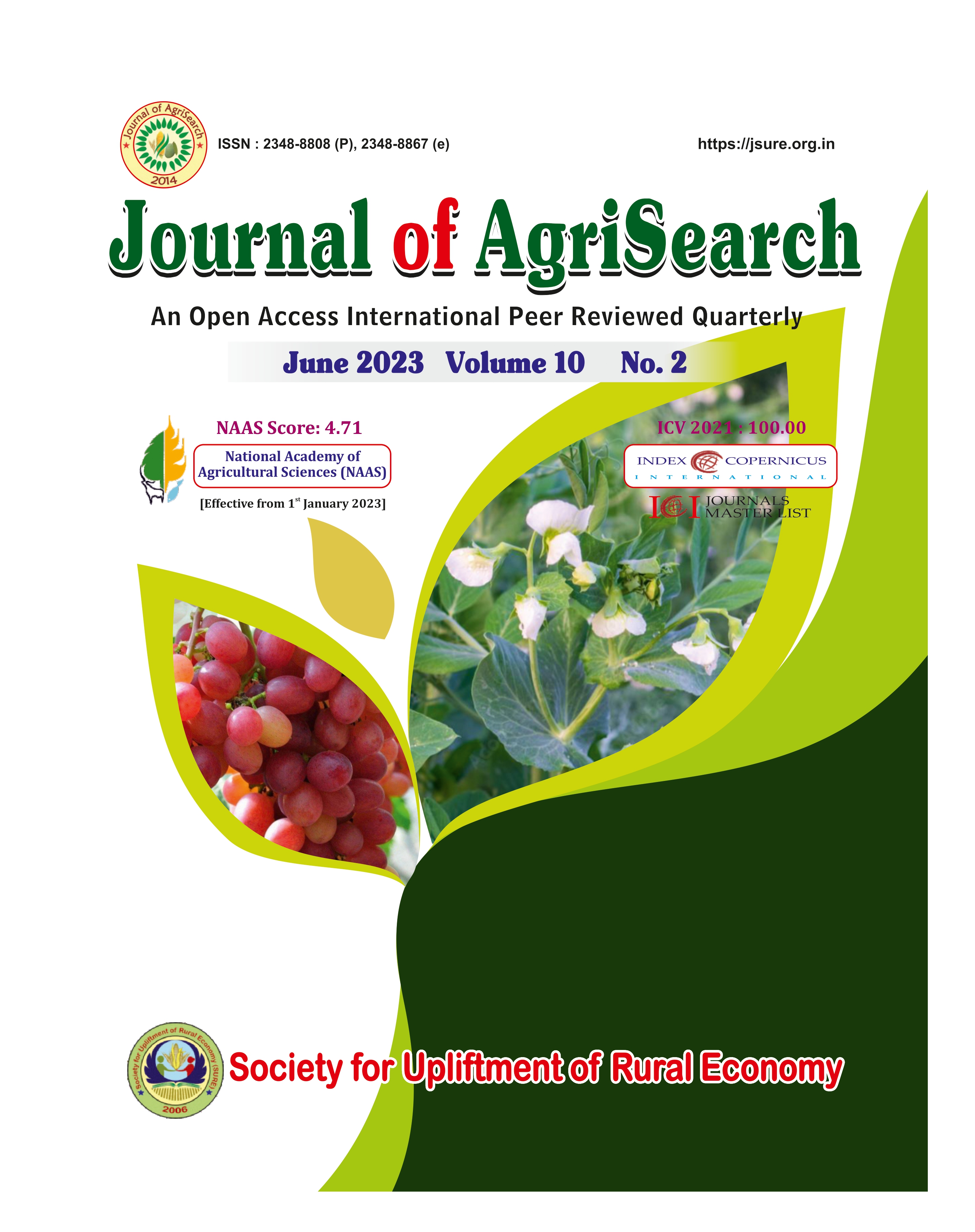A Study on the Impact of ICTs on Education and its Relationship with Socio-demographic Profile of Students
Impact of ICTs on Education and Socio-demography of Students
DOI:
https://doi.org/10.21921/jas.v10i02.12730Keywords:
Socio-demographic profile, Impact, ICTs, EducationAbstract
Information and Communication Technologies (ICTs), which refers to a range of technologies that enable the processing, storage, retrieval, and dissemination of information. These technologies include hardware, software, telecommunications networks, and other digital tools that facilitate communication and the exchange of data. The present study was conducted to find out the impact of ICTs on Education and its relationship with the Socio-demographic profile of Students. Two hundred thirty-five students were selected based on the proportion to the size of the population from four SAUs. The collected data were analyzed using the chi-square test to find out the impact of ICTs and their relationship on each independent variable. The findings of the study revealed that the majority (61.70%) of the students belonged to the 20 – 24 years age group. The majority of students (64.26%) were male, while 35.74 % were female. The majority of the (77.44%) students had a family annual income between Rs. 156733 to 553403 and less than half of the (46.38%) students had a medium level of mass media exposure. The results further revealed that the education of students (0.001), the educational background of the students father (.010), the educational background of the students mother (0.000), and Mass Media exposure (0.004), were positively associated at 0.05 % level of significance due to the impact of ICTs. It means four variables significantly exert their influence on the impact of ICTs.
References
Anderson J and Weert VT. 2002. Information and Communication Technology in Education. A Curriculum for Schools and Programme of Teacher Development. Division of Higher Education. UNESCO.
Atkins DE, Droegemeier KK, Feldman SI, Garcia-Molina H, Klein ML, Messerschmitt DG, Messina P, Ostriker JP and Wright MH.2003. Revolutionizing science and engineering through cyber infrastructure. Report of the National Science Foundation blue-ribbon advisory panel on cyber infrastructure.
Albirini A.2006. Teachers’ attitudes toward information and communication technologies: the case of Syrian EFL teachers. Computers and Education 47(4): 373–398.
Cavas B, Cavas P, Karaoglan B and Kisla T.2009. A Study on science teachers’ attitudes toward information and communications technologies in education. The Turkish Online Journal of Educational Technology 8(2).
Chandran V. 2013. Use and user perception of electronic information resources: A case Study of Siva Institute of Frontier Technology, India. Chinese Librarianship: an International Electronic Journal 36: 85-98.
Kumar S.2009.Media Utilization Behaviour of Undergraduate Agricultural Students of Banaras Hindu University: An exploratory study, M.Sc.(Ag) thesis, Department of Extension Education, Institute of Agricultural Sciences, BHU, Varanasi.
Khan S A, Bhatti R and Khan A A.2011. Use of ICT by Students: A Survey of Faculty of Education at IUB. Library Philosophy and Practice 1:1-13.
Kirti, De D and Mandal P K.2017. A Study on Profile Characteristics of Digital Natives. Indian Research Journal of Extension Education (sp.):125-128.
Murali G V and Venkataramaiah P. 2008. Relationship between profile characteristics of students with their exposure to agricultural websites. Indian Psychological Review 70(2): 91-94.
Malik A K, Godara A K, Yadav K and Kumar S. 2020. Internet usage behavior among
agricultural students in Haryana. Indian Journal of Agricultural Sciences 90(7): 1315-1318.
Meena R S.2017. A study on E Resources among the Students of Extension Education., Ph.D. (Ag) thesis, Department of Extension Education, Institute of Agricultural Sciences, BHU, Varanasi.
Pelgrum WJ, Janssen Reinen IAM and Plomp T J. 1993. Schools, teachers, students, and computers: A Crossnational perspective. Twente, Netherlands: I.E.A.
Patel N, Dixit A K and Singh S R K. 2020. Effectiveness of whatsapp messages regarding improved agricultural production technology. Indian Journal of Extension Education 56(1):54-58.


